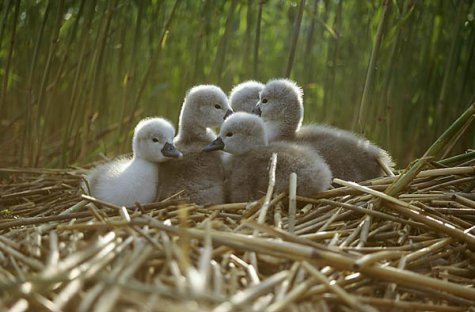Swan families at sea
Photo: Arne Ader
Translation: Liis
Mute swans: children’s corner
Mute swan Kühmnokk-luik Cygnus olor
Mute swans are faithful to their nests – thus we can recognize some nesting pairs quite well from their behaviour or looks. The incubation period lasts five weeks and a few days more; most of the time the female is on the nest, replaced by the male when necessary, but mostly his occupation is with the security of the pair. Most commonly the clutch has 4-5 eggs but a larger number of eggs is not excluded. A swan egg is large, greenish-coloured, covered in chalk dots and thick-shelled, weighing up to 400 grams.
The first swan families are already to be seen in shore waters. The nest is quickly abandoned – in a day or a little longer. Often the female stays on the nest incubating the still unhatched eggs. Bravely led by the male the silver-grey chicks enter the water where the little ones at once can feed on aquatic plants.
In the windy and cool weather at sea during the last days the chicks take a lift on the backs of the adults, sometimes hidden under the wings. The development of the large birds is fast, in two months the cygnets can already fly.
In Estonia a mute swan pair nested for the first time in 1908, and not until 1938 for the second time, in relict lakes in southern Saaremaa. They are the largest birds in Estonia; the weight of a full-grown male can reach 12 kilos, rarely a few more kilos; the weight of the females stays at less than ten kilos as a rule. Males can be distinguished from females by the black knob on the beak – it is much larger on the males.
More than 3000 pairs certainly nest in Estonian waters.









